Disassembling an eReader
I've always loved taking things apart. I remember, as a child, trying to sneak a set of screwdrivers onto a transatlantic flight. I wanted to see how the aeroplane worked and figured that unscrewing vital components while in flight would be just fine.
I've (mostly) grown out of the habit of tearing down things which are currently useful, and tend to wait until they reach their natural end before poking them with sharpened metal.
In late 2009, I purchased the Elonex E511EB from Waterstones. My review of it on this blog was incredibly popular - with over 250 comments!
As much as I loved the 511EB, it is well past its useful lifespan. I've since got a nook and my wife has a Kindle. The Elonex still works, but it's a little slow and clunky. So - time to break out those screwdrivers and see if I can reuse the eInk screen for something else.
After unscrewing the back and cracking off the case, this is what I found (click the images to embiggen them).
The board, made by Hanvon, runs Windows CE, and appears to be cobbled together from the most random of parts. Here's a close up of it

This really is a Frankenstein's monster of a device. Despite having no wireless capabilities, there's space for an antenna! The ribbon connector clip doesn't attach to anything.

In fact, of the three ribbon connectors present, only the one on the left is connected to anything!
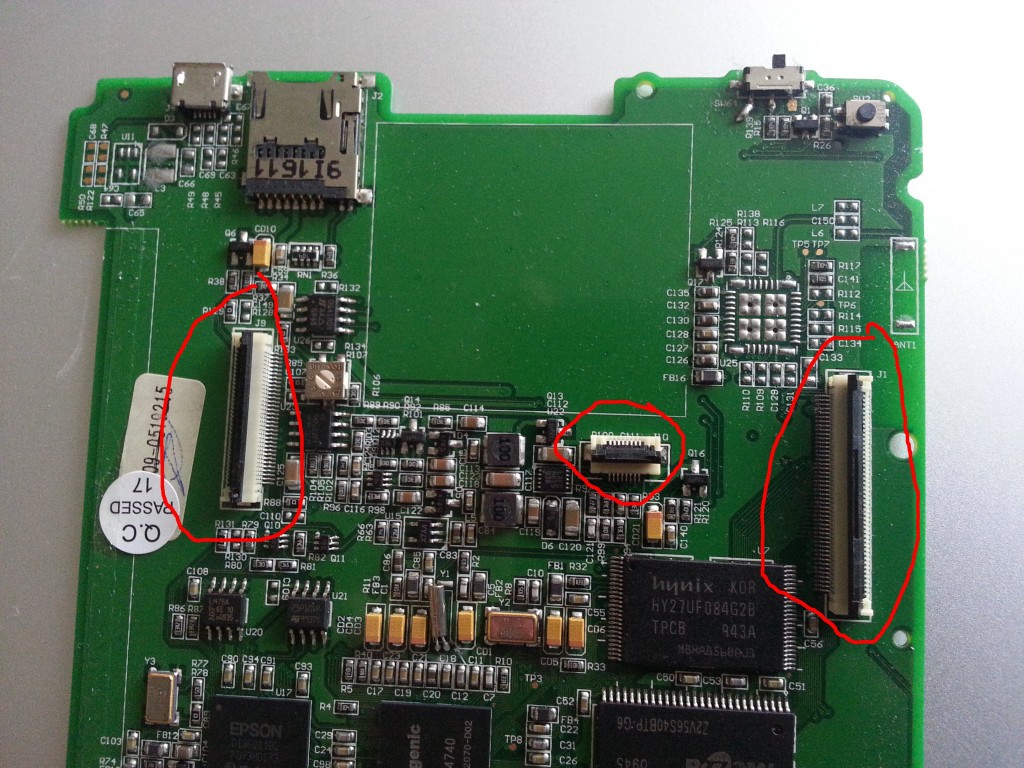
I assume the large empty space is for a WiFi / 3G modem to be coupled to the antenna and the smaller ribbon latch.
Perhaps the one on the right is for a touchscreen digitizer?
To the left of the board is a random switch. It doesn't appear to be connected to anything else. It's not even accessible when the device is assembled.

The speakers are fairly cheap and don't hide anything of importance.
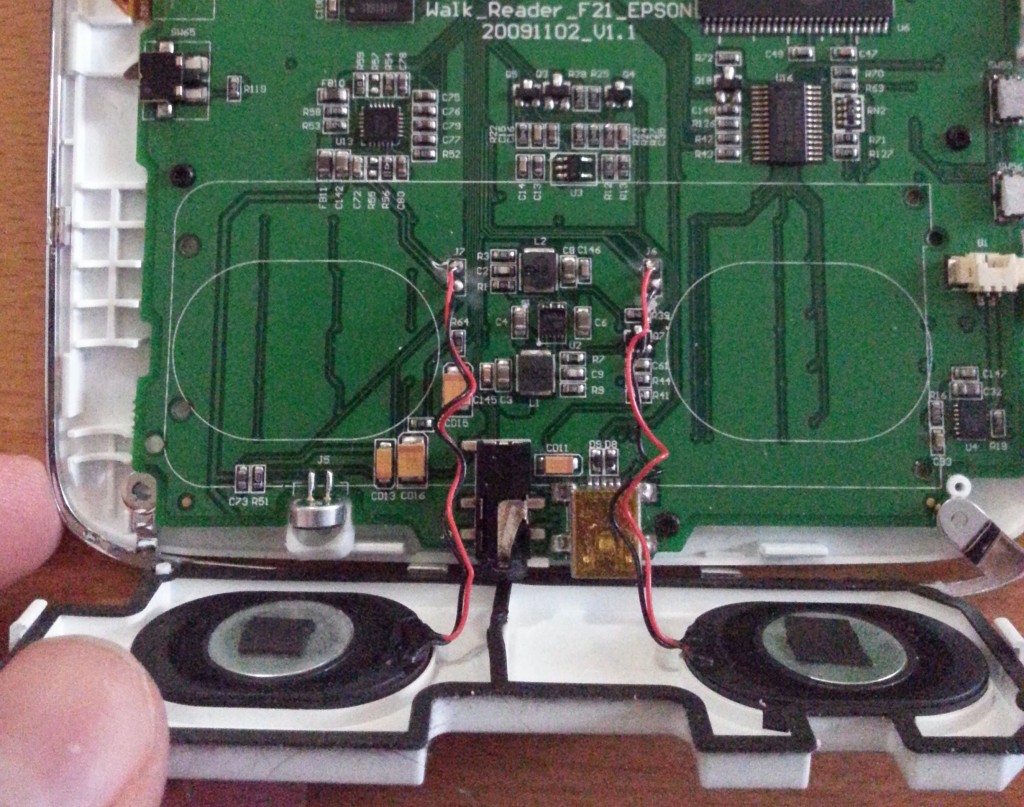
For the chip nerds among you, this is what's driving the engine:
The CPU is the Ingenic JZ4740. Interestingly, this chip is perfectly suited to running Linux. Which makes Hanvon's decision to run Windows CE all the more bizarre.

The eInk controller is the Epson D135211B2.
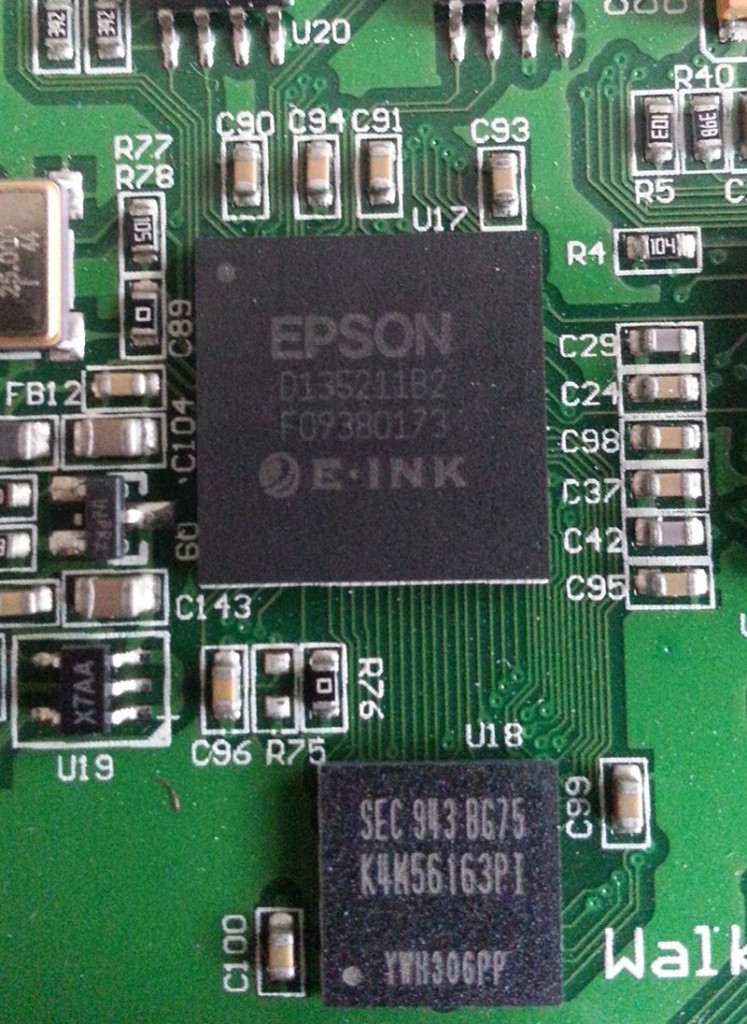
According to this Chinese hacker's website, that's the same version of controller used to work the Kindle's eInk screen.
Connecting the eInk screen to the board is this component from Ichia.

The board itself has very tiny torx screws holding it in place. Once removed, they reveal:

Nothing of consequence.
What To Do With The Screen?
So, I have an 800*600 eInk screen, in reasonable condition, just begging to be put to good use.

Some clever people, like Matthew Petroff, have turned their Kindles into amazing displays - but that relies on the Kindle having a network connection. As does the amazing Kindleberry project which links the Kindle to a Raspberry Pi.
The 511EB is dumb. Dumb as a box of rocks. There's no networking, so that's out. The system is capable of displaying PNGs, but that would require mounting the internal memory, uploading, unmounting, rebooting, and automatically opening an image. Not feasible.
So, what I want to see is if it's possible to control the eInk screen directly from something like the Raspberry Pi.
The screen connector is the ED050SC3(LF)

It's the same screen used for lots of 5 inch PVI displays.
Now, all I need to do is find some (simple) way to drive the screen. Any bright ideas, people?
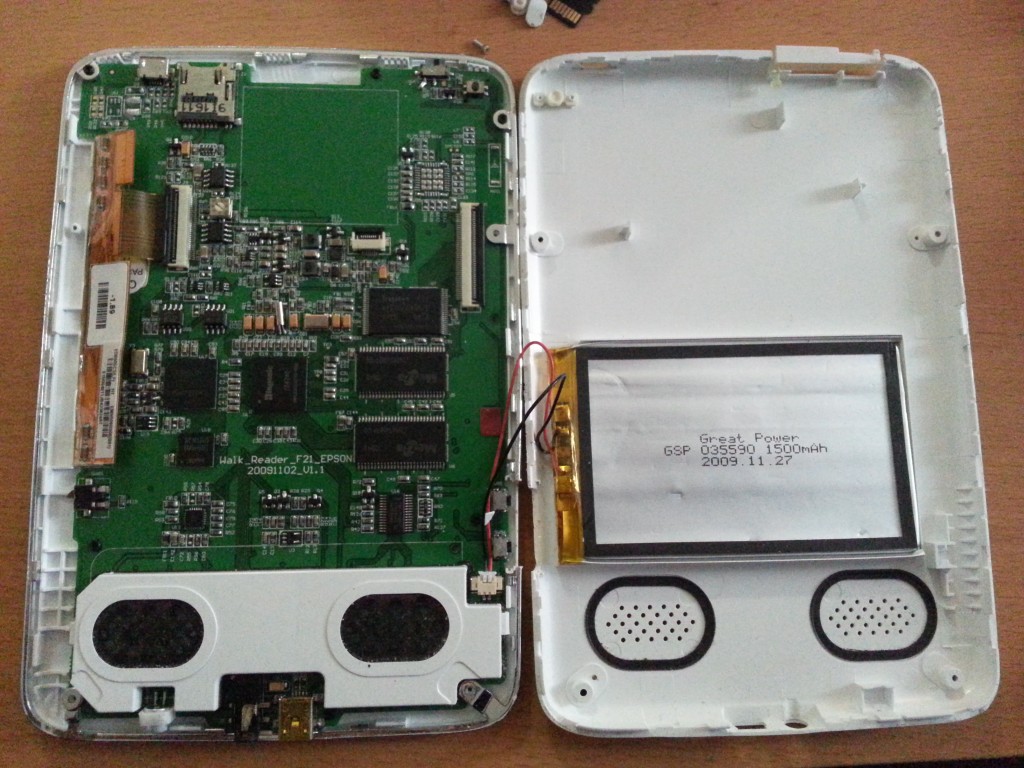




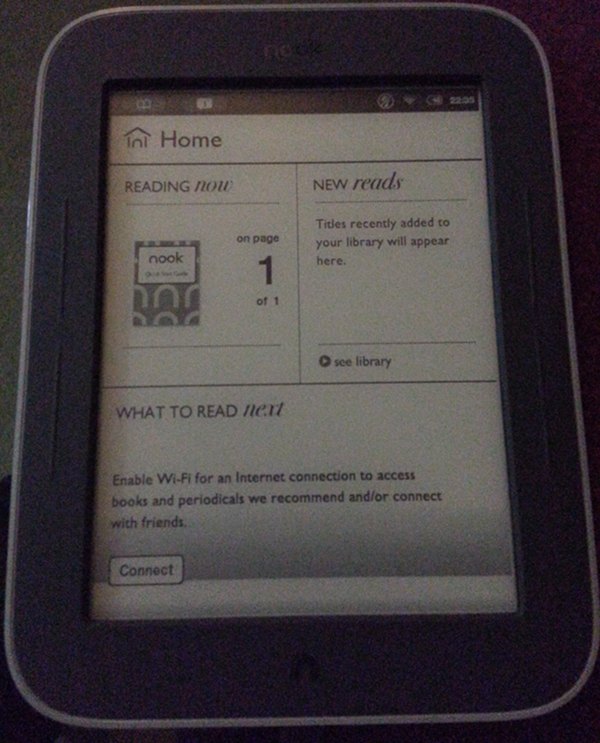 Rooting The Nook
Rooting The Nook
Hi,
I'm trying to do the same with my Kindle, too.
Did you make any progress in driving the e-ink screen?
Best Regards
Hi Philipp,
I didn't get any further. As the nook and Kindle both run Linux and are easily jailbroken, I decided to use those rather than find a way to directly drive the screen.
T
Hi!
I'm trying to do the same with an OYO e-ink screen and just found this product: http://www.adafruit.com/products/1347. Now, the question would be, do all the e-ink screen use the same connection port? Do you have any info about e-ink connectors and related?
The connector looks similar - but there's no easy way to tell. I suggest buying one and trying it?
It seems like that's going to be the only option. The screen is a Sipix a0608e02, but I haven't been able to find the datasheet yet. I'll contact Eiink (bought Sipix) and the people from Adafruit and I'll let you know about it. Do you know of any site where I could find the datasheet? Cheers!
Just keep Googling until something turns up - that's what I usually do 🙂
Did you try pressing that 'secret switch'?
I think it's either reset or self test.
you you have deriver for ED060sc4 ? I font the new driver from github but its not working..
I don't. Sorry.
Hello Terence, I've just ended up here after searching for new info about these old screens because my Papyre 5.1 (Hanlin V5) also uses the same display. You didn't find a way to drive it, did you? I've found a Youtube video and a explanation on how to do it, but the PCB for conecting the display is a custom one, and not cheap.
The video:
The project:
https://kohacraft.com/archives/1067553473.html
Greetings from Spain.
I didn't find a driver. I think it would just be easier and cheaper to buy a new one. Sorry!